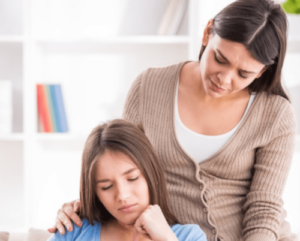Teen Moodiness & Signs of Borderline Personality Disorder
In the movie, Thirteen, Tracy Freeland is a seventh-grade honor student with a troubling home life. As a girl who formerly channeled her frustrations…

In the movie, Thirteen, Tracy Freeland is a seventh-grade honor student with a troubling home life. As a girl who formerly channeled her frustrations…

When you believe your child is using drugs it is hard to know what to do. Whether you found out from another parent, a…

“‘Mom, you never leave me a note in the middle of the night, and I hate homework!’ ‘What are you doing out of your…

This article starts an ongoing series, titled “How To Save Our Kids”, in an attempt to support our teens and families more. Stay tuned-in to the Fuller…

With the start of December comes an almost audible, collective tensing-up of family members worldwide. People everywhere are forming lists of tasks to be…
End of content
End of content
Life’s too short to stay stuck. Request an appointment now.
Would you like to get our monthly resources for mental wellness?
